Family : Tupaiidae

Text © Prof. Angelo Messina

English translation by Mario Beltramini
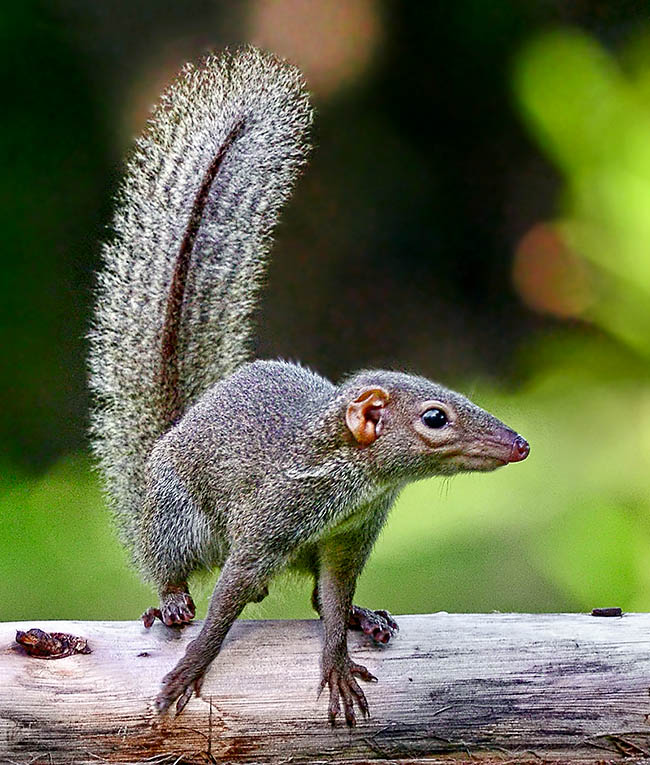
Tupaia belangeri has an area quite wide from southern China and north-eastern India up to the extreme north of Malay peninsula. Recently inserted in the order Scandentia it has however a genome next to the monkeys © Oleg Nabrovenkov
The Northern Tupaia (Tupaia belangeri Wagner,1841), called also, due to its particular look, Northern treeshrew, is a member of the Tupaiidae (Tupaiidae), family of Vertebrates formerly inserted in the Primates and recently ascribed to an order in itself, that of the Treeshrews (Scandentia).
The generic name comes from “tupai” that in Malay language means squirrel or shrew, whilst the specific term belangeri is very likely honoured to Charles Bélanger (1805-1881), botanist and explorer, author of the book “Travel to the East Indies”.
Tupaia belangeri is present in a rather vast territory extending from southern China and north-eastern India up to the extreme north of the Malay peninsula. Common all over its distribution area, is represented by numerically stable populations and therefore is not presently a species under risk.
Ecology-Habitat
It prefers the humid forest habitats in tropical and subtropical areas up to high altitudes, but may be encountered also in shrubby environments and in anthropized areas, such as plantations and gardens.
It is an omnivorous species with a diet formed mainly by invertebrates, especially coleopterans, integrated by fruits, that contributes therefore to the dispersion of the seeds.
It seems it is unable to draw enough water from the food and therefore is not able to stay more than one day without drinking.
Morphophysiology
Small animal, averagely of around 15-20 cm of length, its tail is as long as the rest of the body.
The snout is more or less elongated with big and reniform ears; the mouth presents a dental formula of 2/3 incisors, 1/1 canines, 3/3 premolars and 3/3 molars.
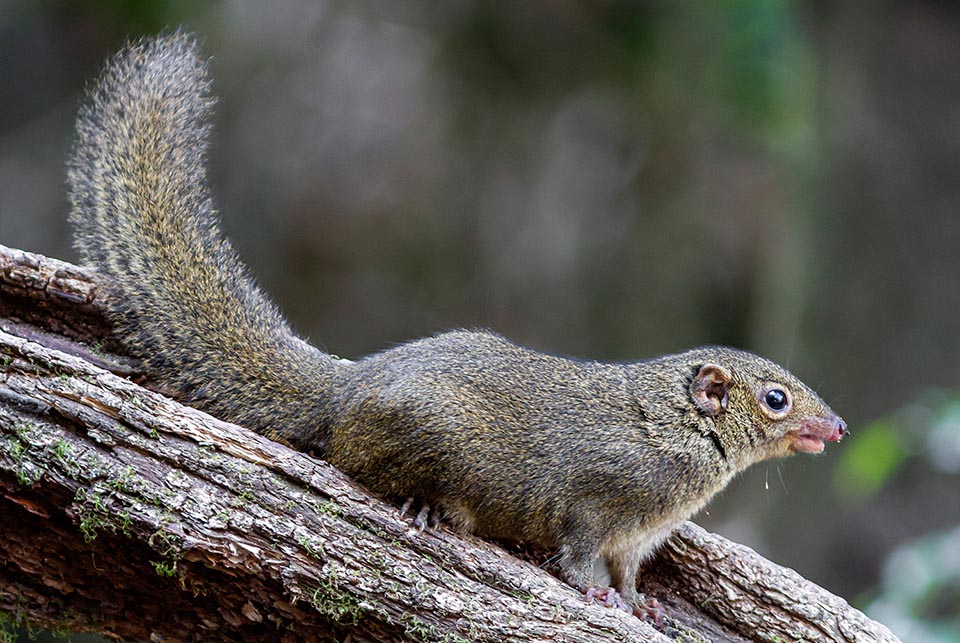
The males, slightly bigger than the females, distinguish for the ampler body and the presence of a ring of white hairs around the eyes © Larry Hubble
The males, with a body slightly bigger than the females, are distinguished for the broader head and the presence of a ring of white hairs around the eyes.
The mantle, basically of grey olive colour with the hairs streaked with black, tends to get progressively darker in the rear part of the body and on the tail that is particularly thick.
The ventral parts are yellowish, as well as the throat and the forelegs slightly longer than the hind ones and are kept folded as the squirrels do.
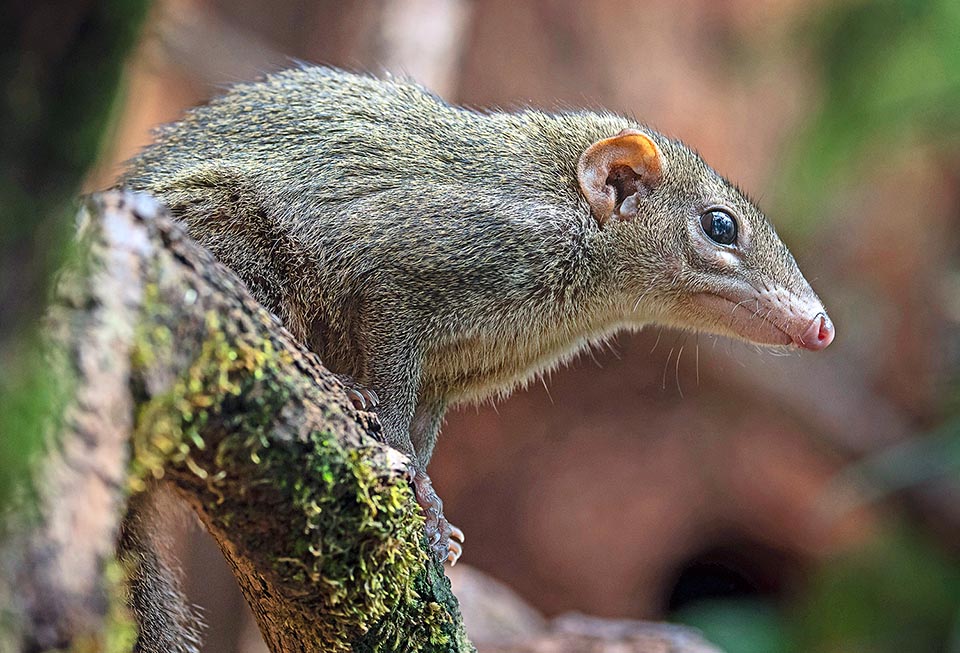
Northern Tupaia lives in pairs but is not a very affectionate species. The kids have a separate, unattended nest and, breastfed every two days, are left alone © Günther Klemens
The legs and the lower part of the tail, of pinkish colour, have no hairs and the colour of the fur varies geographically, with populations having an olive brown colouration and others reddish.
Unlike the Treeshrew properly so called (Tupaia glis Diard, 1820) of which it was previously considered a subspecies, the females of the Northern Tupaia have three pairs of breasts.
The distinction between males and females on the base of the external genitalia presents some difficulty because the two sexes at first glance are quite similar.

It chiefly eats invertebrates, especially coleopterans, and fruits. Frequent in the humid tropical and subtropical forests up to high altitudes, can be met also in anthropized environments like plantations and gardens © Oleg Nabrovenkov
As a matter of fact, the females have the clitoris somewhat elongated and grooved on the ventral portion, so much that it may seem a penis whilst in the males the slender sexual organ is equipped with a tubular sheath that is missing in the clitoris.
The penis implants behind the testicles that are contained in a scrotum and can be retracted in the abdominal cavity.
Ethology-Reproductive Biology
Of diurnal and mainly terrestrial habits, the Northern Tupaia is a monogamous animal even if males and females don’t seem to manifest between them relationships except for reproductive purposes.
Fundamentally territorial animals, they mark their territory with the secretion of an odoriferous gland located on the chest and defend it from any intruders; they communicate with each other with sounds of variable intensity and identifiable with signals of warning, defense and contact.
Matings may occur at any time of the year.
The females have a pregnancy of 40-45 days and deliver usually 1 to 5 pups who grow up alone in a nest, built with branches and twigs on bushes and trees, while the parents sleep in a separate nearby nest.
The pups are breastfed by the mother once every two days. This behaviour appears as the lowest contact mother-pups so far registered for the viviparous mammals. The parents do not intervene if the nest where the pups stand is invaded by predators and do not show behaviours that may be identified as parental cares.
Weaning occurs when about one month old. Once self-sufficient and reached the sexual maturity by the 4-5 months of life, the young abandon the nest. In turn, the mother gets heated and reproduces again.
Taxonomic considerations
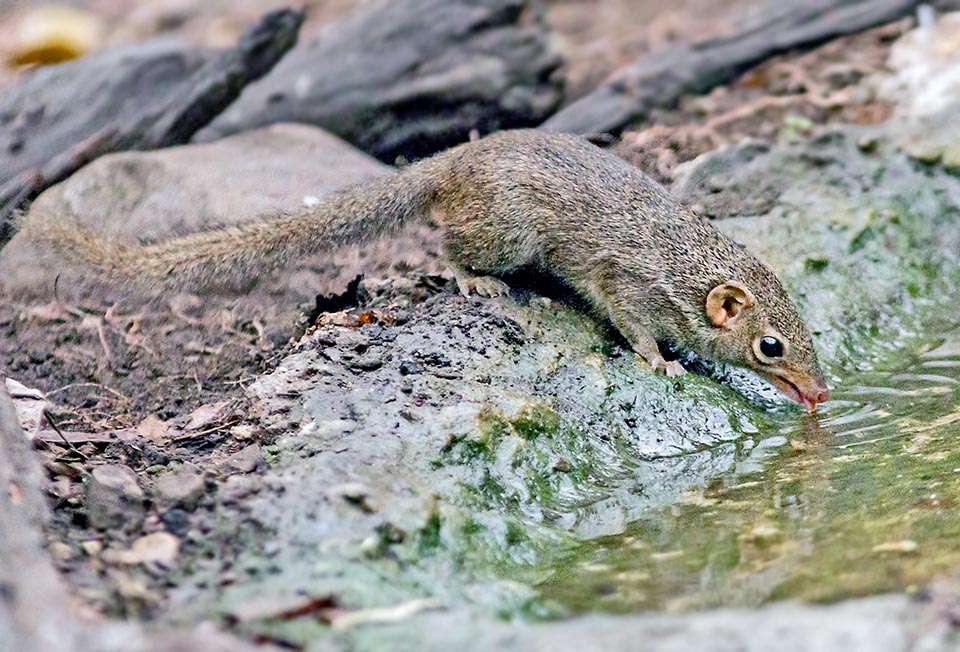
It seems that it cannot get enough water from the food and hence is not able to resist more than one day without drinking © Sue Bishop
Described in 1841 with the specific name Cladobates belangeri by the German zoologist J.A. Wagner for south-east Asian, the Northern Tupaia was initially ascribed erroneously by the French zoologist I.G. Saint-Hilaire to the Large treeshrew or Tana (Tupaia tana Raffles, 1821), whilst until recently it was considered a subspecies of the Common treeshrew or Tupaia properly called (Tupaia glis Diard, 1820).
Presently the animal enjoys the status of a species in itself, in turn divided into several subspecies, about 25. But the mystery about the phylogenetic relationships is still to be clarified as if studies on its mitochondrial genome seem to confirm the hypothesis of a greater affinity with rabbits, recent data of complete sequencing of the genome place the species closer to the monkeys.
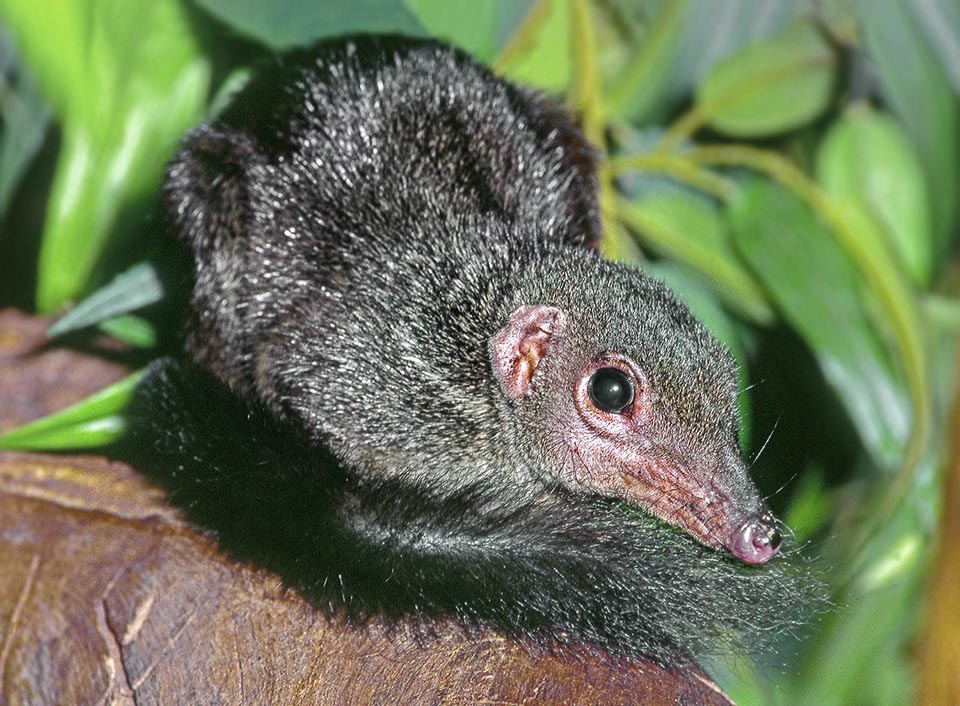
Has become recently a laboratory animal for the study of hepatitis C, and its eyes, similar to the human ones, allow to deepen the knowledge about the retinal bodies © Paddy Ryan
Curiosities
Northern Tupaia has acquired increasing interest in the human medicine field as a biological model as a result of the use, starting from 2002, of its hepatic cells for the study of Hepatitis C, a chronic disease worldwide.
More recently, as a result of the similarity of the structure and of the sight of its eye with the human one, characteristics that are absent in the small conventional laboratory animals such as the guinea pigs, this animal has proven to be a valuable scientific reference in the deepening of the knowledge on the retinal bodies, as well as on the dimensions of the components and on the state of refraction of the human eye.
→ For general notions about Primates please click here.
→ To appreciate the biodiversity within the PRIMATES please click here.
